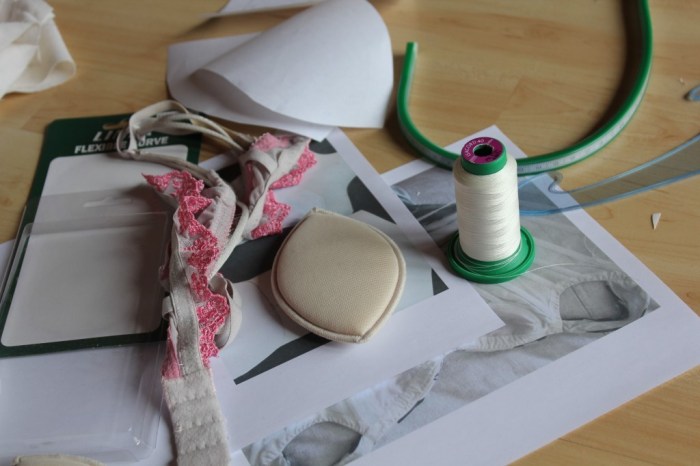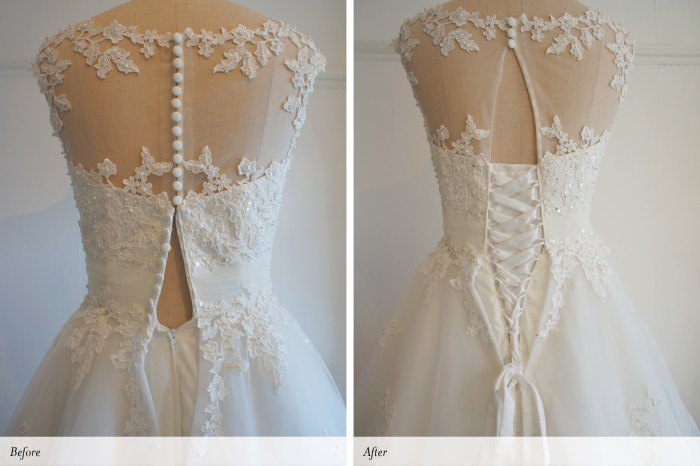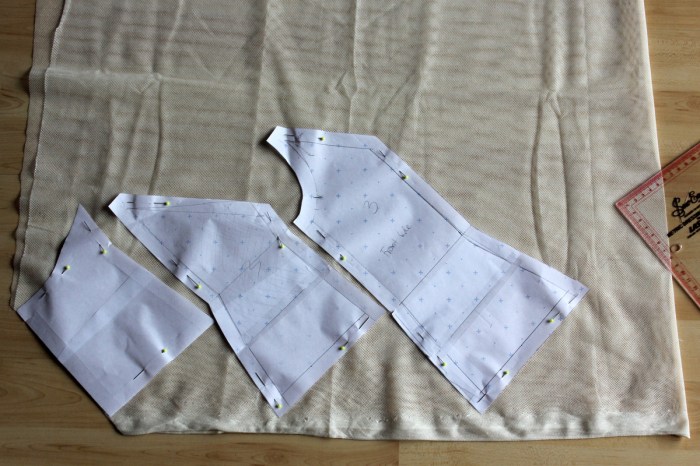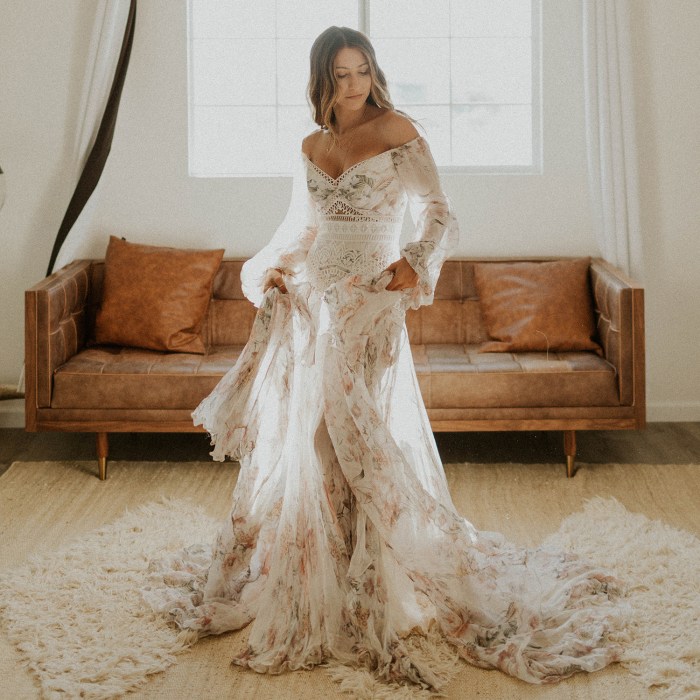Corset Backs for Wedding Dresses: A Comprehensive Guide
Adding a corset back to a wedding dress can dramatically enhance its fit, silhouette, and overall appearance. This guide explores the various types of corset backs, the methods for their addition, design considerations, and the fitting process.
Types of Corset Backs for Wedding Dresses

Source: thisblogisnotforyou.com
Different corset back styles offer unique advantages and disadvantages. The choice depends on the dress’s design, the bride’s preferences, and the seamstress’s expertise. Materials used also influence the final look and feel.
| Style | Description | Pros | Cons |
|---|---|---|---|
| Laced Corset | Features a series of eyelets and laces allowing for adjustable tightness. | Highly customizable fit, allows for shaping and cinching. | More time-consuming to adjust, requires more skill to install. |
| Zippered Corset | Utilizes a zipper for closure, offering a clean and streamlined look. | Easy to use, quick closure. | Less adjustable than a laced corset, may not provide the same level of shaping. |
| Hook-and-Eye Corset | Employs a series of hooks and eyes for closure, offering a secure and relatively easy fastening system. | Simple to fasten, offers a good balance between adjustability and ease of use. | Less adjustable than a laced corset, might not be as flattering for significant shaping. |
Common materials for corset backs include satin, silk, lace, and coutil (a sturdy woven fabric). Satin and silk offer a luxurious look but may be less durable. Lace provides a delicate aesthetic but might require additional support. Coutil is known for its strength and ability to provide excellent shaping. The choice of material should complement the main dress fabric.
Adding a Corset Back: Methods and Techniques
Adding a corset back requires precision and attention to detail. The specific method depends on the chosen style.
Adding a Laced Corset Back
- Measure and cut the corset fabric according to the dress’s back measurements, adding seam allowances.
- Create eyelets along the edges of the corset fabric using a specialized tool or by hand-sewing.
- Attach the corset fabric to the dress’s back, carefully aligning seams and ensuring a smooth fit.
- Insert the laces and adjust the tightness to achieve the desired fit.
- Securely stitch the corset fabric to the dress’s lining.
Adding a Zippered Corset Back
- Prepare the corset fabric with seam allowances and carefully attach it to the dress’s back lining.
- Insert the zipper, ensuring it is centered and securely stitched.
- Finish the edges of the corset back and the zipper for a clean and professional look.
Adding a Hook-and-Eye Corset Back
- Sew hooks and eyes onto the corset fabric and the dress’s back lining, ensuring precise alignment for secure closure.
- Test the closure multiple times to ensure a comfortable and secure fit.
Considerations for Fabric and Design, Adding a corset back to a wedding dress
Fabric selection and design are crucial for a seamless and aesthetically pleasing result.The corset back fabric should closely match the main dress fabric in both color and texture. Slight variations are acceptable, but significant discrepancies can be jarring.For an A-line dress, a simple, straight corset back with minimal embellishments would suffice. A mermaid dress might benefit from a more structured corset back that accentuates the curves.
A ballgown could incorporate a more elaborate design with lace or other decorative elements.Satin offers a sleek and luxurious look, while silk provides a softer drape. Lace adds a delicate touch, but its fragility needs to be considered.
Fitting and Alterations

Source: co.uk
Proper fitting is crucial for comfort and a flattering silhouette. Adjustments may be needed to ensure the corset back fits seamlessly with the rest of the dress.The process involves adjusting the corset’s tightness and length to achieve the perfect fit. This might involve taking in seams, adjusting shoulder straps, or making minor alterations to the corset itself.
| Tool/Material | Purpose |
|---|---|
| Measuring Tape | Accurate measurements for corset construction. |
| Sewing Machine | Attaching the corset back to the dress. |
| Pins | Holding fabric in place during fitting and alterations. |
| Scissors | Cutting fabric. |
| Seam Ripper | Removing stitches for adjustments. |
Visual Representations: Illustrative Descriptions

Source: thisblogisnotforyou.com
Imagine a simple A-line wedding dress with a plain back. The silhouette is relatively straight, lacking significant shaping.After adding a laced corset back, the same dress now exhibits a more defined waist and a subtly enhanced bustline. The overall silhouette is more flattering and figure-hugging. The laced back adds a touch of elegance and visual interest. A zippered corset back would provide a cleaner, more modern look, while a hook-and-eye corset would offer a balance between practicality and visual appeal.
The choice of corset style influences the final shape and drape, enhancing the dress’s overall impact.
Frequently Asked Questions: Adding A Corset Back To A Wedding Dress
Can I add a corset back to any wedding dress?
While most dresses can accommodate a corset back, the feasibility depends on the dress’s existing structure and fabric. Some heavily structured dresses might be unsuitable.
How much will adding a corset back cost?
The cost varies greatly depending on the complexity of the dress, the type of corset back, and the seamstress’s rates. Expect a range from several hundred to several thousand dollars.
How long does it take to add a corset back?
The timeframe depends on the complexity and the seamstress’s workload. Allow at least several days to several weeks, especially for intricate designs.
What if the corset back doesn’t fit perfectly after installation?
Minor adjustments are often necessary. A skilled seamstress can make alterations to ensure a comfortable and flattering fit.








